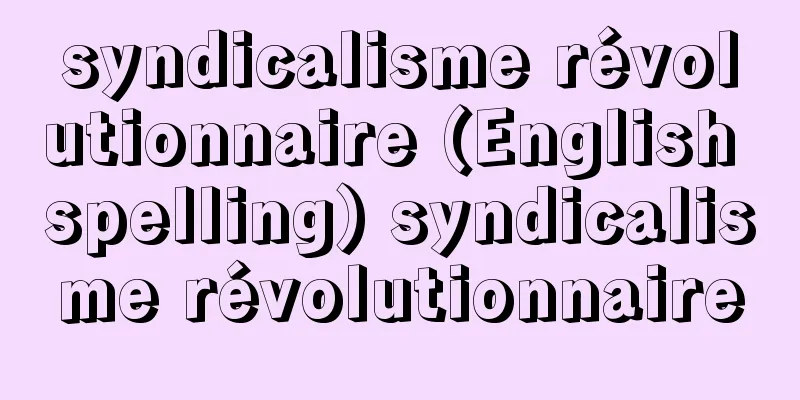Women's language - Joseigo

|
Academically, it refers to all words used by women, but in the narrow sense, it refers to words that are unique to women and that are significantly different from men's words. However, words created by women of the Imperial Court during the Muromachi period are called "nyobo kotoba" (ladies' words), and words used by courtesans in Kyoto, Osaka, and Edo during the Edo period are called "kuruwa kotoba" (red light district words), and are not academically included in women's language. As "The Pillow Book" says, "The words of men and women are the same, but they sound different to the ear," it seems that in the Heian period, both men and women used the same words, but the only difference was how they sounded to the ear. However, after the Muromachi period, "nyobo kotoba" spread from the Imperial Court to outside, such as the inner quarters of feudal lords, and gradually became women's language and spread. Especially during the Edo period, many books titled "Women's Words" and "Memories of Women" were published, which collected feminine words that women used and liked, and the number of words increased rapidly. These include most of the ladies' words, such as "ohinaru" (to get up), "oshizumaru" (to sleep), "omuzukaru" (to cry), "ohiroi" (to walk), "kukon" (sake), "omeguri" (side dish), "ogushi" (hair), "aomono" (vegetables), "okabe" (tofu), "omushi" (miso), and "shamoji" (a spoon), as well as taboo words such as "nami no hana" (salt), "u no hana" (tofu pulp), "atari bachi" (mortar), and "arinomi" (pear). In addition to these words, expressions that use "o" or "go" at the beginning of a word, such as "okome" (rice) or "gohon" (gohon), and polite expressions that add "masu" to the end of a word, such as "mai maimasu" (I will) or "itashimasu" (I will), were added, and in the Meiji period, expressions at the end of sentences, such as "no yo" (no yo), "dawa" (dawa), and "nee" (nee) also developed. [Mashita Saburo] "Study of Women's Language by Saburo Mashimo (1969, Tokyodo Publishing)" ▽ "Dictionary of Women's Language by Saburo Mashimo (1967, Tokyodo Publishing)" [Reference] |Source: Shogakukan Encyclopedia Nipponica About Encyclopedia Nipponica Information | Legend |
|
学術的には女性の使用することば全体をさすが、狭義には男性語と差異の著しい女性特有の語をいう。ただし室町時代に宮中女性によってつくられたことばは「女房詞(にょうぼうことば)」、江戸時代に京都・大坂・江戸の遊女の使ったことばは「廓(くるわ)ことば」といって、学問上女性語には含めない。『枕草子(まくらのそうし)』に「おなじことなれども聞き耳ことなるもの、男女(おとこおんな)の詞」とあるように、平安時代では耳に聞く感じが異なるだけで、男女ともに同じ語を使っていたらしいが、室町時代以後「女房詞」が宮中から大名の奥向(おくむき)など外部に伝わり、女性語となってしだいに広がった。とくに江戸時代には、女性の使って好ましい女性語を集めた『女の詞』『女中詞』と名づける書が多数出たので、単語が急増した。「おひなる」(起きる)、「おしずまる」(寝る)、「おむずかる」(泣く)、「おひろい」(歩くこと)、「くこん」(酒)、「おめぐり」(おかず)、「おぐし」(髪)、「青物」(野菜)、「おかべ」(豆腐)、「おむし」(みそ)、「しゃもじ」(杓子(しゃくし))などほとんどの女房詞のほか、「浪(なみ)の花」(塩)、「卯(う)の花」(おから)、「あたり鉢」(すり鉢)、「ありのみ」(梨(なし))などの忌みことばなどである。さらにこれらの単語以外に、「お米」「ご本」などのように、語頭に「お」「ご」をかぶらせた言い方や、「まいります」「いたします」など、語末に「ます」をつけるていねいな言い方も加わり、明治になると「のよ」「だわ」「ねえ」などの文末の言い方も発達した。 [真下三郎] 『真下三郎著『婦人語の研究』(1969・東京堂出版)』▽『真下三郎著『女性語辞典』(1967・東京堂出版)』 [参照項目] |出典 小学館 日本大百科全書(ニッポニカ)日本大百科全書(ニッポニカ)について 情報 | 凡例 |
Recommend
Indian skimmer
...It is widely distributed in the central part o...
Aimai
In Noh and Kyogen, two or more people dance togeth...
Sawara (Chamaecyparis pisifera)
It is an evergreen tree of the Cupressaceae family...
Ostrakismos (Greek: ostrakismos)
In the 5th century BC, democratic Athens had a sy...
Lèse majesté of places of worship - Lèse majesté of places of worship
The crime of openly committing disrespectful acts ...
Psychoautomatism - automatisme mental [French]
A concept used in French psychiatry, also known as...
Aleksandr Yakovlevich Golovin
1863‐1930 A master of Russian stage design. A memb...
Gorpis brevilineatus (English spelling) Gorpisbrevilineatus
...The Japanese common flybug N. apicalis is 5-7m...
Scenery of the Qingming Festival on the River
A subject of Chinese painting. It depicts the scen...
《Ii Tairo》 - Iitairou
…[Ono Masao] In the Edo period, it was legally fo...
Kao
A painter of ink and ink from the Northern and Sou...
Oonori - Oonori
The name of a rhythmic style in Noh. It is opposed...
Papin - Papan (English spelling) Denis Papin
A French-born maker of laboratory instruments. He...
Vakhtang Gorgasal
...At the end of the 4th century, the Sassanid Em...
Village invitation - Murake
〘Noun〙① (Abbreviation of "muraukeshinden (mur...







![Yawata [city] - Yawata](/upload/images/67cd104f2fb7b.webp)

